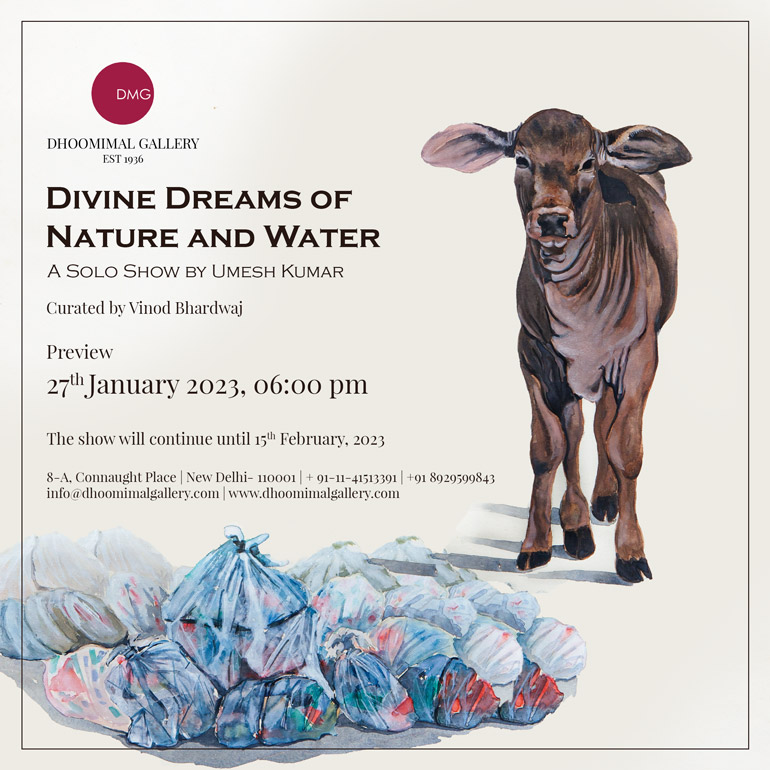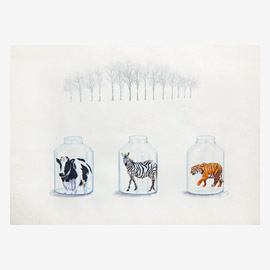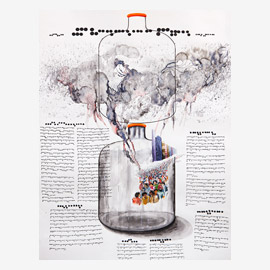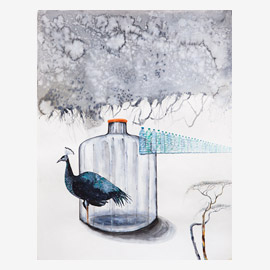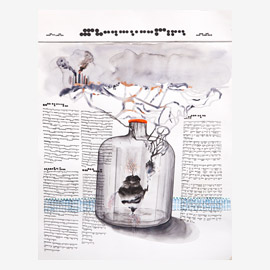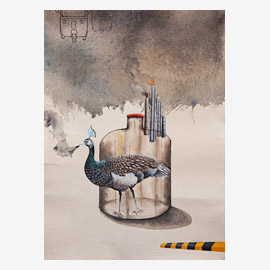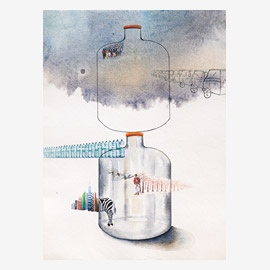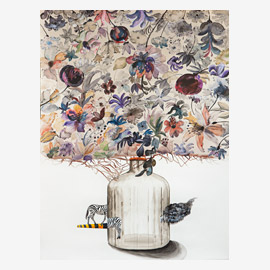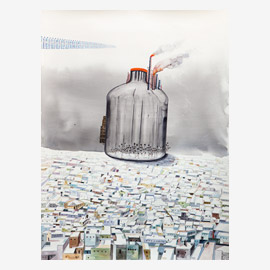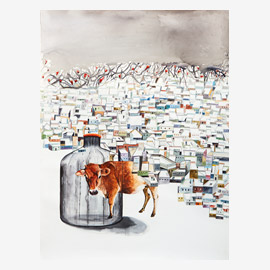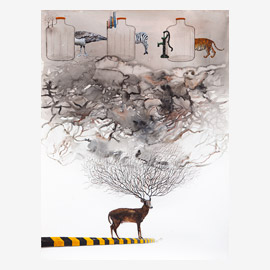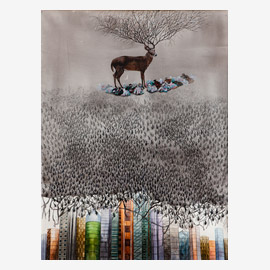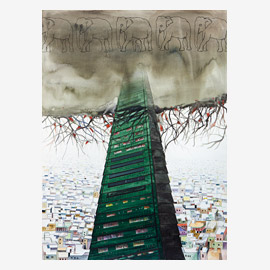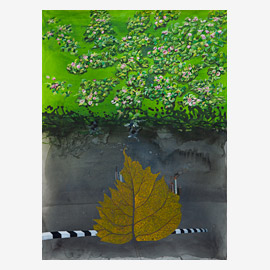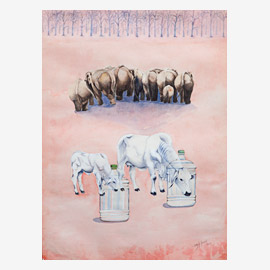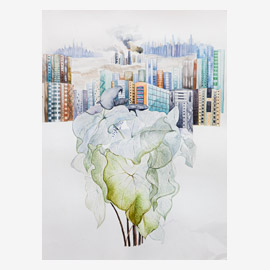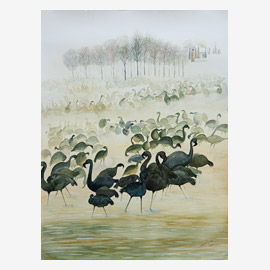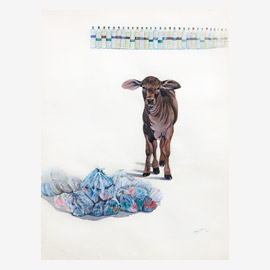Chhinnamastika Temple is located in Rajrappa, some 80km from the Jharkhand capital of Ranchi. It is among the most ancient temples in India, located at the confluence of the rivers Bhairavi-Bheda and Damodar. There is a boulder placed along its northern wall and one has darshan of Mata Chhinnamastika’s divine form carved on it looking west. After the Kamakhya Temple in Assam this is the second largest shaktipeeth.
The landscape of this region initially both excited and a...
Chhinnamastika Temple is located in Rajrappa, some 80km from the Jharkhand capital of Ranchi. It is among the most ancient temples in India, located at the confluence of the rivers Bhairavi-Bheda and Damodar. There is a boulder placed along its northern wall and one has darshan of Mata Chhinnamastika’s divine form carved on it looking west. After the Kamakhya Temple in Assam this is the second largest shaktipeeth.
The landscape of this region initially both excited and agitated artist Umesh Kumar. Here he was able to identify the vast form of nature. Hazaribagh was another inspiring landscape. In fact, during the initial years of his art practice Umesh was in a way obsessed with the medium of watercolour. Whether it was Rajrappa or the tribal area of Hazaribagh, Umesh created thousands of landscapes in watercolours in those days.
It is necessary to remember this early phase to know and evaluate the artist in him. And it is also essential to remember the decisive influence Jharkhand’s steel city of Bokaro had on Umesh’s impressionable mind. In those days there was hardly any scope to nurture artistic dreams within the middle-class dreams of steel. At home Umesh had to sketch furtively, fearing his father might notice him and lose his temper.
Those were the days when the dreams of the steel city were deeply influenced by the Russian socialism. A youth was expected to excel in sports. In those days Umesh excelled in playing football and volleyball. On one side there was this attraction of the world of drawings and on the other the extreme discipline of sports. On one side there was this magic of art which attracted Umesh who was scared of the maths exams to the extent of crying in desperation while on the other there were beautiful dreams woven around the sports discipline of the steel city. One can search for poetry even in sports. One can identify in it a sort of wonderful poetic rhythm associated with ballet.
Then Umesh found an excellent art teacher, R P Mandal, in Bokaro who took Umesh into the amazing magical world of drawing and managed to convince his father that art could also be a fruitful means of making a living. This is how the poetry of the steel city continued to live on inside Umesh which he had recognized in the magic of lines in the innumerable drawing competitions there. Subsequently teachers like Bireshwar Bhattacharya at Patna Art University taught Umesh the magical ways of the medium of watercolour.
It is essential to know this background to understand Umesh’s development. Subsequently, he worked in all media - painting, watercolours, installation – but what laid the foundation of the artist in Umesh were his facility with drawing and the magical tribal landscape of Jharkhand. During the golden period of the modern Indian art i. e. 2002 to 2008, Umesh’s senior colleague of Patna days, Subodh Gupta, was quite popular internationally. At the time Subodh curated a show focusing on Bihar’s young talent at the then reputed Bodhi Art Gallery. Among the artists who impressed Subodh at the show, Umesh was a prominent name.
Installations using a pile of mineral water signify these very anxieties of Umesh. The disappearance of sparrows from cityscapes or their losing the ability to take off smoothly and fly into the skies have been effectively projected by him in his installation art. One wishes the brave and beautiful flights by flocks of pigeons do not become a thing of the past in metropolises.
While presenting this exhibition of watercolours by Umesh at Dhoomimal Gallery I am happy to notice that the artist has given new dimensions to his powers of imagination. He has a fine control over the medium and the remarkable flight of his imagination also draws the viewer.
